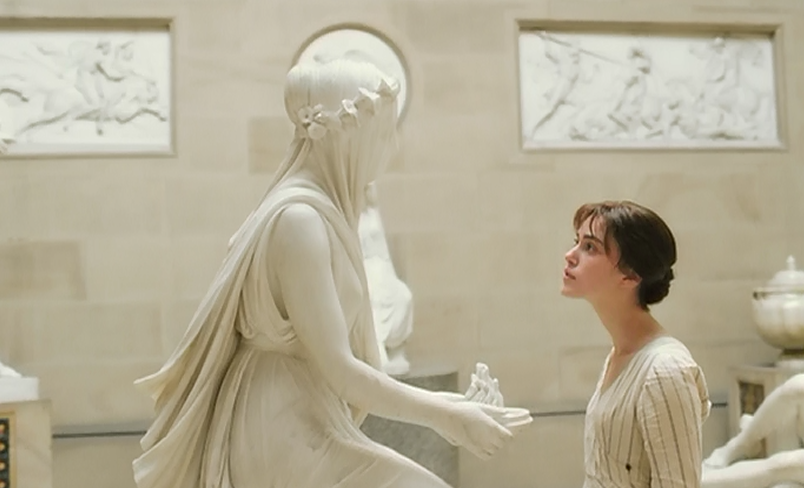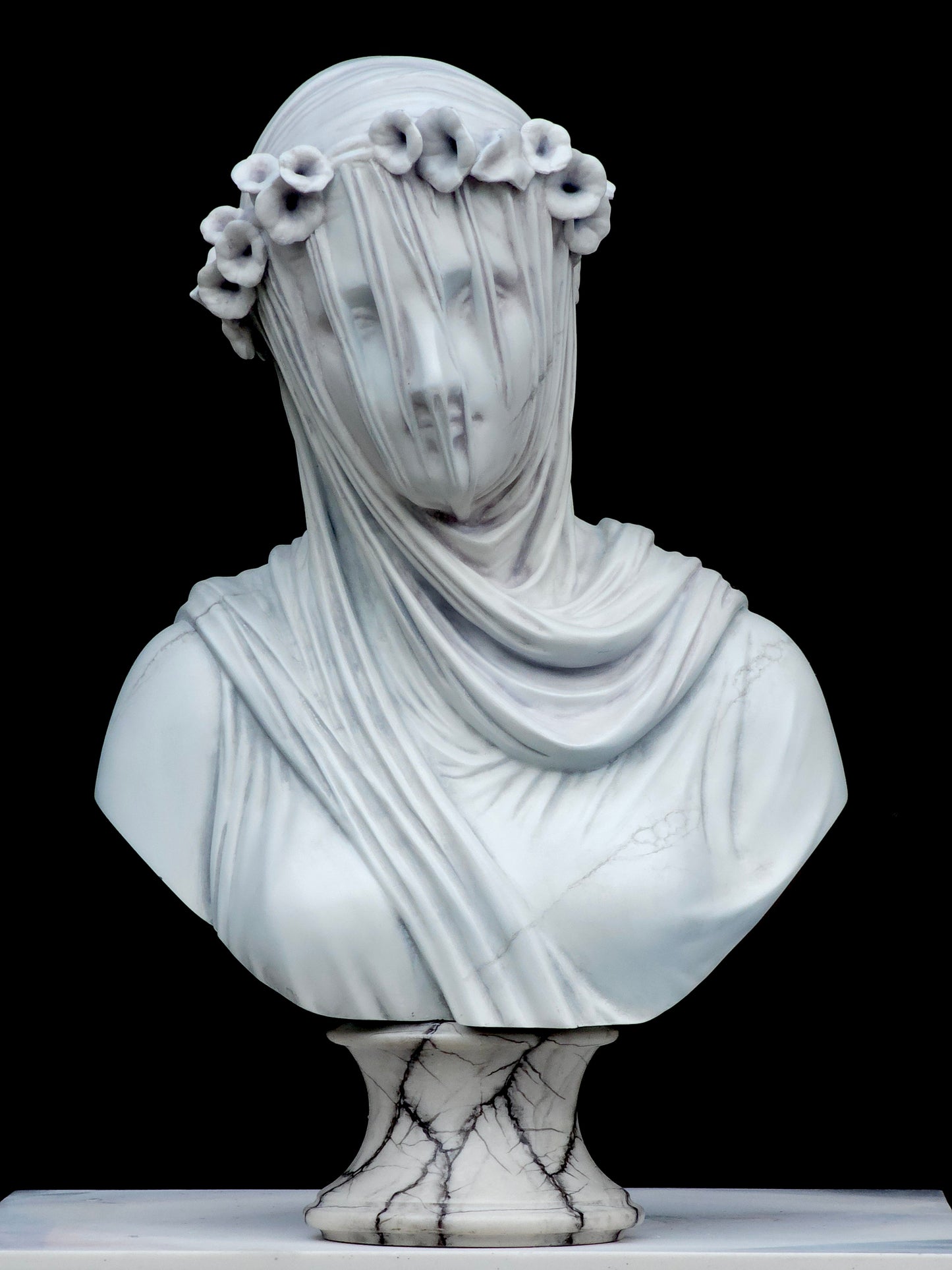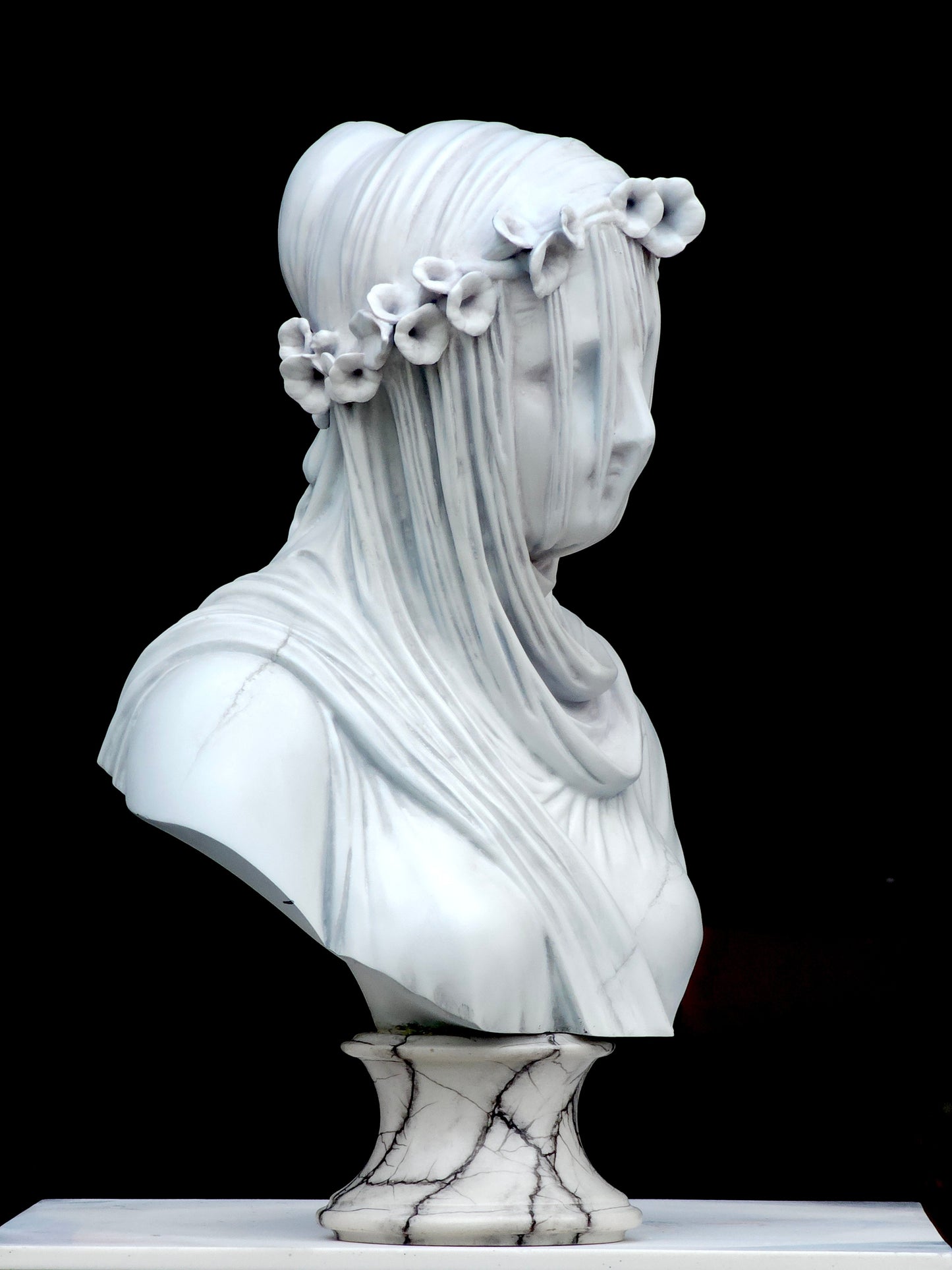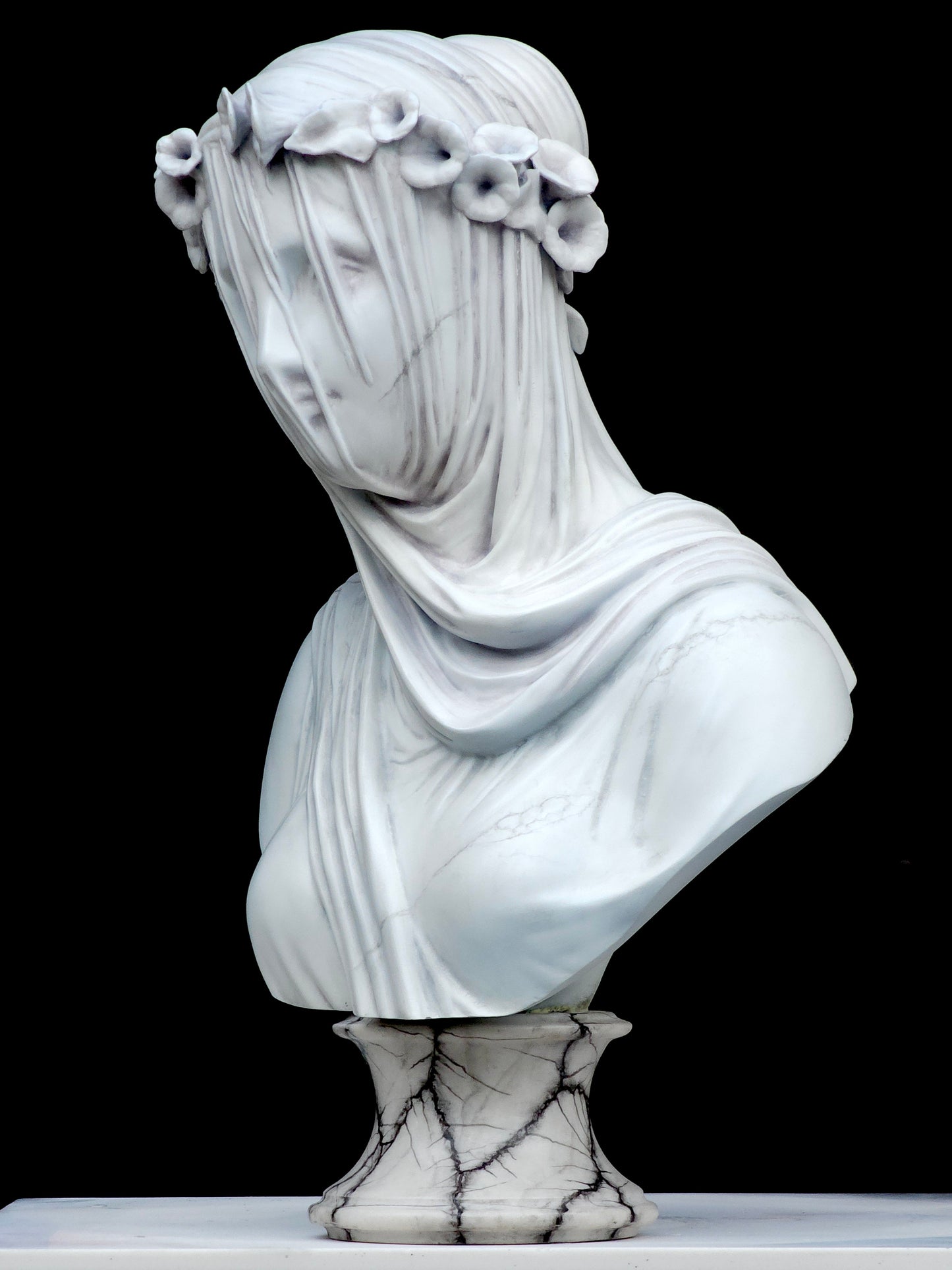Sculptured Arts Studio
Dame voilée originale finement finie
Dame voilée originale finement finie
Impossible de charger la disponibilité du service de retrait
La Dame voilée originale, un buste en marbre, par le studio Sculptured Arts.
Reproduction artistique sculptée de la tête originale de la célèbre sculpture de Chatsworth, finement finie en marbre poli et montée sur un socle veiné blanc et noir.
Le 12 octobre 1846, William Spencer Cavendish Il se rendit à l'atelier de Raffaelle Monti, à Milan, en Italie, pour s'enquérir des nouvelles d'une dame. Cavendish était le 6e duc de Devonshire, surnommé en Angleterre le « duc célibataire ». Il possédait huit des plus belles demeures de Grande-Bretagne et 200 000 acres de terre britannique. Il possédait une banane à son nom – la Cavendish – cultivée dans ses jardins et qui allait bientôt devenir la variété la plus populaire au monde. Et maintenant, à 56 ans, il désirait une certaine jeune femme, discrètement et paradoxalement cachée derrière un voile de pierre.
Les figures voilées, généralement sculptées dans le marbre et suggérant un visage ou un corps partiellement dissimulé par du tissu, étaient devenues populaires un siècle plus tôt, au XVIIIe siècle. L'effet est bien sûr illusoire, rendu possible par le marbre translucide et une composition subtile. Mais en matière d'illusion, elle est fascinante, et les sculpteurs rivalisaient d'imagination pour placer toutes sortes de sujets sous des vêtements transparents, de la Vierge Marie à Marie-Madeleine. Cavendish était ami avec Antonio Canova, un autre célibataire et sculpteur italien populaire, qui adorait un Christ voilé sculpté par Giuseppe Sanmartino en 1753 et déclarait qu'il aurait donné dix ans de sa vie pour créer un tel chef-d'œuvre.
Monti était certain de pouvoir y parvenir. Bien qu'il n'eût qu'une vingtaine d'années à l'arrivée de Cavendish, il avait prouvé qu'il était un sculpteur exceptionnellement doué. Comme le duc, il avait hérité de sa vocation. Son père, Gaetano, possédait une importante entreprise de sculpture, et Monti apprit à ses côtés, ainsi qu'à l'Académie des Beaux-Arts de Milan, où il obtint une médaille d'or à 20 ans. Il passa ensuite quatre ans à Vienne, sculptant des bustes de la famille royale autrichienne, avant de revenir à Milan au moment même où l'empire autrichien consolidait son emprise sur une grande partie de l'Italie.

Keira Knightley admire la Vestale voilée de Raffaelle Monti, dans le film « Orgueil et Préjugés » de 2005.
Le duc fut convaincu. Quelques jours après sa rencontre avec Monti, il laissa au jeune sculpteur un acompte substantiel, d'une valeur d'environ 16 000 £ aujourd'hui, pour une vestale voilée. Lorsque la sculpture arriva en Angleterre, au printemps 1847, le duc l'exposa apparemment dans sa villa à l'ouest de Londres, connue sous le nom de Chiswick House. Mais en 1999, elle fut transférée à Chatsworth House, probablement source d'inspiration pour la succession de M. Darcy dans Orgueil et Préjugés de Jane Austen. et la doublure de la maison dans la version cinématographique de 2005. Dans l'un des moments les plus tendres du film, Keira Knightley découvre le chef-d'œuvre de Monti dans la galerie de sculptures de la maison, et dans le visage de la femme voilée, elle semble trouver la compassion qu'elle n'avait pas encore découverte chez M. Darcy lui-même.
Pour le duc, la Vierge voilée n'était qu'une sculpture parmi une vaste collection de marbre blanc qu'il avait édifiée pendant trente ans. Mais pour Monti, elle marqua un tournant.
En 1848, un an après avoir envoyé sa récompense au duc, Monti rejoignit la révolte contre l'Autriche. Après la défaite des Italiens lors d'une première bataille, Monti partit pour Londres, pour ne jamais revenir. Là, la vierge voilée devint son motif emblématique, un objet de conversation que l'élite exhibait chez elle. Il contribua d'ailleurs à inspirer toute une industrie artisanale de femmes voilées, principalement sculptées par des Italiens, qui firent de ces femmes anonymes et vertueuses un subtil symbole de patriotisme.
Dimensions 38 x 25 x 16 cm. 12 kg







